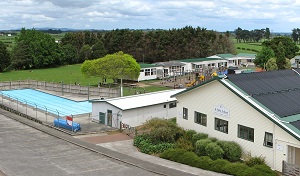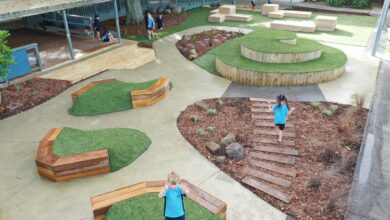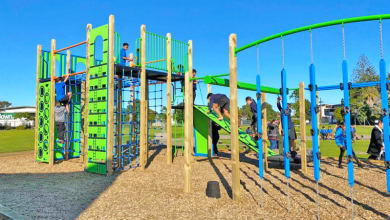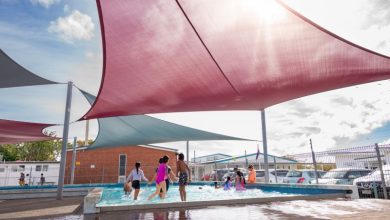Schools harnessing the power of the sun

 As the effects of climate change are increasingly having a serious impact across the world, the need to adopt a more sustainable way of living becomes ever more crucial.
As the effects of climate change are increasingly having a serious impact across the world, the need to adopt a more sustainable way of living becomes ever more crucial.
With the use of solar energy seen as one way of helping the planet survive, a number of companies are helping New Zealand schools become more energy-efficient and kind to our environment.
Check out the latest issue of School News to read the full article.
Solar King
Auckland-based company SolarKing has been involved in quoting schools around the country for solar installation over the last two years, director Roy Maddox says.
“Solar energy is ideal for schools, because it uses the source of power that’s available during the day,” Mr Maddox says.
Schools with swimming pools that are solar heated often keep their pools open during the school holidays, so in that way solar power also provides a benefit to the community, Mr Maddox says.
Many schools are still trying to get funding to have solar power installed and SolarKing is currently investigating options for assisting schools with funding, he says.
“Schools are starting to get government funding and we are helping some of them to put a funding package together to have their solar power system supplied and installed. We are happy to discuss this with any principals who are interested.”
Mr Maddox says the biggest benefit for schools having solar power installed is the savings they can make on their energy costs.
“Some of the larger schools have energy bills of $150,000-plus and with solar energy that can be reduced by $100,000.”
Even smaller schools can reduce their power bills significantly. For example, Peria School, a primary school in the Far North where SolarKing has installed a 10 kwt solar power system, has saved $700 on its annual energy costs, Mr Maddox says.
The company has installed a 33kwt system at Auckland’s Dilworth School, one of the largest private schools in the country.
“Dilworth was the first private school in New Zealand to invest in solar energy,” Mr Maddox says. (See Case Study.)
Part of the company’s ethos is also to help community organisations move to renewable energy and reduce their energy costs. Organisations it has worked with include the Cancer Society, the New Zealand Playcentre Association, and Hospice Mid-Northland.
It also acted as an advisor to the Green Party in the development of its Solar in Schools Policy, Mr Maddox says.
Solar Group Ltd
 Just over five years ago, the EECA (Energy Efficiency Conservation Association) launched a ‘warm pools for schools’ programme in which schools were encouraged to install solar heating to heat their school pools.
Just over five years ago, the EECA (Energy Efficiency Conservation Association) launched a ‘warm pools for schools’ programme in which schools were encouraged to install solar heating to heat their school pools.
As Roy Netzer, engineer and managing director of Solar Group Ltd points out, it was recognised that solar energy was the most cost-effective way for schools to heat their swimming pools, and was a way of saving a lot of power.
“It also meant that schools could use their asset, the pool, in both term one and term four,” Mr Netzer says.
“For some schools in the more southern areas of New Zealand, the water in their unheated pool was still freezing in term one when they went back to school.”
The cost of installing the solar panels ranges from about $10,000, and Solar Group can assist schools with a sponsorship programme as well as facilitating an EECA five-year Crown Loan.
“To qualify for involvement with EECA, we needed to establish a business case whereby what was proposed was environmentally friendly, economically viable and doable. We were approved, and so were able to use that to help schools with solar heating.
“The Crown pays for the solar installation and the school repays the cost over five years at a low interest rate, which is actually close to interest free. The cost to the schools to pay it off is $500 a quarter, which isn’t too much of a burden.”
Mr Netzer says that due to the running costs of heating their pool, many schools, especially in colder areas, had filled up their pools, thus removing the opportunity for students to learn to swim.
“These pools need to be heated – that’s why solar makes perfect sense. Once the pool is heated, the heat will last for three or four days. A pool cover will minimise heat loss at night, and even if there are two or three days without sun, one sunny day will bring the heat back. Solar heating means the pool is useable throughout the whole season.”
Solar Group has installed solar heating in about 80 schools between 2009 and 2014, with systems ranging in size from 36 square metres to 388 square metres, and in price from around $10,000 to $85,000. Most projects were below $20,000, with many of the schools combining it with other upgrades to pool infrastructure, such as the filtration system or changing sheds.
Five more have been completed already this year, with another five scheduled to be installed by year-end.
Solarcity
 The CEO of Nelson-based Solarcity, Andy Booth, says when the business was first established, they wanted to be different from other businesses involved in the solar energy sector.
The CEO of Nelson-based Solarcity, Andy Booth, says when the business was first established, they wanted to be different from other businesses involved in the solar energy sector.
“We wanted to operate with a social conscience and provide solar energy for social good,” Mr Booth explains.
“The first thing we wanted to do was provide free education for schools across New Zealand on energy use and climate change and make them aware of the scale of the challenge we face through climate change.
“We wanted to educate the next generation of kids about the important role solar energy will play and about having a 100 per cent renewable energy target. That distinguishes us from others, because we are driven by an education imperative.”
Mr Booth says the responsibility of schools is to educate children so they will have a bright as possible future, but points out that children needed to understand what that future would look like in terms of climate and energy use.
“We believe solar energy is an important part of New Zealanders’ lives going forward and that people should pay a fair price for power by having the right tools to achieve that efficiently and sustainably.”
The company has put mechanisms in place whereby schools that have solar panels installed by Solarcity will pay a fixed price for their power for the next 20 years, power which will be clean and green, Mr Booth says.
“Schools commit to a long-term contract to buy the power but we supply and install the solar panels. This has a positive impact on their operating costs and gives them certainty.
“It’s important for schools to find a way to go solar without using their capital and draining their educational resources and they can do this by locking in the fixed price for their solar energy use without the cost of the panels and installation.”
Bringing technology into the learning spaces also makes a positive contribution to students’ education, Mr Booth says. With this technology, students and teachers can track the performance of the solar energy system, the school’s energy use and the carbon reduction.
“They log in to see this information. It’s an active way of educating kids about renewable energy.”
Solarcity works out of the Nelson Environment Centre where a group of teachers, working alongside schools, have put together curriculum support material to educate students on climate change and energy efficiency, in schools where it has installed solar energy.
To date, 22 schools around the country have had solar panels installed by Solarcity. Long-term funding for the initiative has been put in place with the help of Sir Stephen Tindall, equity firm Pencarrow and the NZ Super Fund.
Genesis Energy
It is an exciting time in New Zealand in the world of solar energy. More schools want to link into the teaching and learning about solar energy and energy efficiency, Genesis Energy – Schoolgen Team Leader Margaret Twaddle says.
The Schoolgen programme has a comprehensive website www.schoolgen.co.nz, which embraces all aspects of learning for all age groups. It offers online resources and live solar data. Which is the sunniest Schoolgen school now? The icons on the map of New Zealand show where the Schoolgen schools are located. Both students and teachers are fascinated by being able to click on the icons and find the data. Ms Twaddle says.
“The colour coding gives them a clue but they always want to know how much electricity various schools are generating. This is real time solar data from across New Zealand, which is a very valuable resource not only for schools but for our country.
Each Schoolgen school can generate a large portion of its electricity. Schools now want to benefit from the improved economies of scale that come with installing a larger solar array and are looking to add to the free solar array which is part of the Schoolgen package. This links into exploring how to create an energy-efficient school.
“As a company Genesis Energy is keen to support schools in bringing the concept of solar energy to life. By providing the schools and specifically the teachers with curriculum-based resources, we are helping to improve the next generation’s understanding of solar energy and energy efficiency,” Ms Twaddle says.
“Sustainability is at the heart of creating a school that prepares students for their tomorrow. Teachers are taking on this new learning with the students. What is a photovoltaic solar panel? This is new learning for many teachers.
“With 71 Schoolgen schools and more to come with free solar panels we are creating schools that want to have a model of renewable energy on the roof of their school to show their students that their school is helping New Zealand with the bigger goal. This supports the goal for New Zealand to be able to generate 90 per cent of our electricity from renewable sources.”









